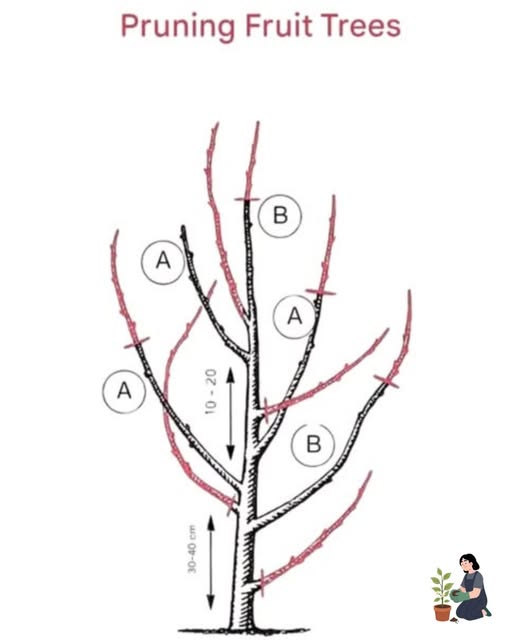Training Pruning for Fruit Trees
Training pruning helps shape young fruit trees so they grow stronger, healthier, and more productive over the years. With a few simple steps, you can guide your tree’s structure and support better fruit quality.
Materials or Tools Needed:
Pruning shears (sharp and clean)
Gardening gloves
Small hand saw (for thicker branches)
Optional: tree ties or soft twine for branch positioning
Optional alternatives: clean kitchen scissors for small twigs
Step-by-Step Method:
Identify the central leader or main trunk:
Choose one strong, upright stem to be the main guide of your tree’s height and shape.
Select well-spaced branches:
Pick 3–5 evenly spaced branches around the trunk to form the main scaffold structure.
Prune competing branches:
Remove branches that cross, rub, or grow inward. This improves airflow and light.
Shorten long branches:
Trim overly long shoots to encourage stronger, balanced growth.
Train branch angles:
Use soft ties or twine to gently pull young branches outward, creating wider angles that produce more fruit.
Repeat lightly each year:
Make small adjustments at the end of each winter or early spring while the tree is still dormant.
Additional Tips:
Always prune with clean tools to avoid transferring disease.
Avoid removing too much at once—moderate yearly pruning is healthier than heavy cuts.
Focus on shaping the tree when it’s young; mature trees require less structural training.
Good sunlight and airflow reduce pests and improve fruit size and flavor.

